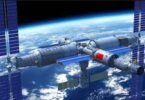Monitoring Desk
BERN: Particle accelerators can speed up subatomic particles almost to the speed of light. The tradeoff is that this requires miles-long tunnels, so such machines are typically enormous and very expensive to build. Physicists are keen to build a viable tabletop version capable of accelerating particles over mere centimeters. Researchers at Lawrence Berkeley National Laboratory have now achieved the highest energy yet recorded using these so-called “plasma wakefield accelerators,” and they describe their work in a newspaper in Physical Review Letters.
Typical particle accelerators use modulated electric fields inside metal cavities to speed up electrons. The Large Hadron Collider at CERN in Switzerland is the largest ever built, with a 16-mile ring of superconducting magnets serving to boost electrons to near-light speeds. By contrast, plasma wakefield acceleration involves firing very intense, short bursts of laser light into a cloud of ionized gas (the plasma).
The resulting “wave” rippling through the plasma leaves a “wake” of charged particles behind it, just like a speed boat will churn up a wake of water as it zooms across a lake. Then a second laser pulses more electrons into the plasma. If this is done at just the right time, those electrons can “surf” along the wakefield. The electrons draw off the wakefield’s energy to pick up more speed, just like a surfer can pick up speed skimming down the face of a wave.
Lots of different groups are working on plasma wakefield acceleration, using various techniques. Earlier this month, CERN’s Advanced Proton Driven Plasma Wakefield Acceleration Experiment (AWAKE)—which uses a high-energy proton bunch as the driver to create the wake, rather than a laser pulse like the LBNL experiment—managed to accelerate electrons to 2 GeV. AWAKE is a bit behind the Berkeley team in that regard, but the fact that two different methods of plasma wakefield acceleration are making such good progress bodes well for the field.
A 20-centimeter sapphire tube, or capillary, was used to achieve the world record. The tubes are used to generate and confine plasmas and to accelerate electrons.
Tabletop accelerators hold much promise for practical applications in medical therapies, X-ray imaging, and possibly even security scanner technologies. They’re so promising, in fact, that in 2015, the Gordon and Betty Moore Foundation awarded a $13.5 million grant to Stanford University to develop an “accelerator on a chip” the size of a shoebox by 2020. Just as computers once filled entire rooms and now fit neatly into laptops, tablets, and smart phones, the idea is to ultimately use micro-fabrication techniques to build a handheld particle accelerator (although the associated radiation would make holding the device in one’s hand unfeasible).
This latest paper builds on team leader Wim Leemans’ prior work at LBNL; he is now the accelerator director at DESY in Germany. In 2014, he and his team achieved then-record acceleration of 4.25 giga-electron volts (GeV). They used an electrical discharge to create a plasma out of gas contained within a short, thin tube. Then they injected a pulse of laser light to carve out a channel in the ionized gas to contain the pulse—similar to how fiber-optic cables channel light. They also created waves that trap free electrons and accelerate them to high energies.
Such a feat requires a great deal of precision and control over the laser beam, since it means pulsing it through a 500-micron hole a good 45 feet away. Fortunately, LBNL has one of the world’s most powerful and precise lasers in BELLA (Berkeley Lab Laser Accelerator). But while the 2014 experiment was successful, the laser light was so powerful it kept destroying the structure of the sapphire tube and, hence, losing its tight focus.
Leemans et al. knew they would need to create plasma channels that were less dense in the middle to get to even higher energies. So they tinkered with their set-up a bit more, borrowing a technique from the 1990s: shooting an eight-nanosecond laser pulse into the tube right after the discharge (420 nanoseconds after, to be precise). The pulse would both heat the plasma and form a deeper channel capable of fully confining the laser. This made it possible to use a longer 20cm tube, compared to the 9cm tube used in the 2014 experiment.
“The development of stable plasma acceleration with energies near 10 GeV is a milestone on the route from the lab to first applications,” said Leemans. “We have developed a new concept in the toolbox, and together with other concepts for acceleration, beam stability and beam control existing at DESY, this will allow for compact electron sources.”
But we’re not quite there yet. Writing in Physics, Florian Grüner of the University of Hamburg notes that the pivotal 2004 achievement of 100-MeV energies essentially launched this new field of plasma wakefield acceleration. He compared the milestone to how the publication of Jules Verne’s 1865 novel, From the Earth to the Moon, and the subsequent first human in space in 1961 launched the age of space exploration. But he thinks we haven’t yet reached the equivalent of the 1969 Moon landing.
“It is still not clear when the ‘Moon landing’ will happen in the form of a wakefield-accelerator user facility,” Grüner writes. “The key to reaching this goal will be to develop an unprecedented level of control over all relevant parameters. This means introducing entirely new ‘knobs’ for things like the final energy and energy spread of the accelerated particles.”
Courtesy: (arstechnica.com)






